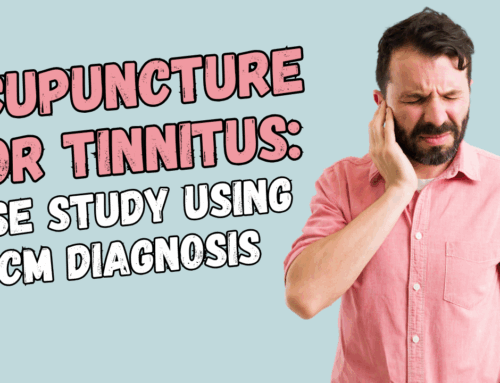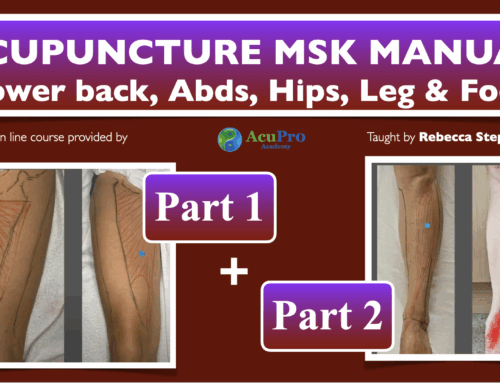Listen on Apple Podcasts Listen on Spotify Listen on YouTube Listen on Amazon Music
You can also watch it on YouTube:
🔗 Links mentioned in this episode:
The Complete Fertility & TCM Treatments Online Course
The Complete Pregnancy & TCM Treatments Online Course
Show Notes
I have been asked by many of you to create a podcast on the 8 extraordinary vessels and how we can use them in clinical practice. Admittedly, in my TCM schooling days, we barely brushed over them. Apart from learning the REN & DU points, I had no idea how to utilize them to treat patients.
Over the past 20 years, I’ve followed the teachings of Yvonne Farrell & Jeffrey Yuan, which allowed me to understand the 8 Extra meridians better.
What are the 8 Extraordinary vessels? 🤔
The 8 Extraordinary vessels are the REN, DU, CHONG, DAI, YIN WEI & YANG WEI, YIN QIOAO & YANG QIAO.
- The 8 Extra Vessels run deep within our bodies, and supply the 12 main meridians with Essence. They support our genetic heritage (the root of who we are).
- They all connect to the TCM Kidneys through Essence (Jing).
- They each have a confluent point which connects to a main meridian.
- The REN & the DU vessels are the only ones that have their own points. The other 6 vessels share points with the main 12 meridians.
- Using the 8 EO Vessels in clinical practice is very helpful in tapping into our genetics and reproductive system. At the core, they access our emotional being as well (from past generations to now).
Welcome to my exploration of the fascinating world of the Eight Extraordinary Vessels in acupuncture! I’m passionate about Traditional Chinese Medicine (TCM) and thrilled to share how these vessels can transform clinical practice and enhance patient care. Let’s begin our deep dive into each vessel and learn its unique characteristics and how to utilize them effectively.
Understanding the 8 Extraordinary Vessels 💡
So, why focus on the Eight Extraordinary Vessels? In Traditional Chinese Medicine (TCM), these vessels represent the reservoirs of energy and essence, connecting deeply with our genetics, reproductive system, and emotional well-being. When utilized correctly, they offer preventive and reproductive medicine capabilities, significantly influencing both our physical and emotional health. They are particularly adept at addressing intergenerational and childhood traumas that shape our emotional landscape, making them a fascinating area of study in TCM.
The Ren and Du Vessels 🪄
Let’s start with the Ren and Du vessels, two of the most well-documented extraordinary vessels due to their distinct acupuncture points. The Ren vessel, running along the front of the body, is the sea of all yin meridians. It plays a vital role in managing reproductive and various jiao issues (lower, middle, upper), offering therapeutic benefits such as calming the mind and supporting emotional nurturance, particularly for women who often neglect self-care. The Du vessel runs along the spine to the head, the yang powerhouse of the body. It’s significant for spinal strength, addressing brain health and issues related to the central nervous system, and even expelling external pathogens due to its yang nature.
The Chong and Dai Vessels ✨
The Chong vessel, known as the sea of blood, is integral to the female reproductive system and even broader Yuan qi (source qi) functions. It’s deeply grounding and taps into blood-related issues. Its strongest role is in balancing love and logic and fostering authenticity within oneself. On the other hand, the Dai vessel, distinguished by its horizontal pathway, functions like a girdle or belt, integral for structural containment. It holds profound implications for pelvic stability and security, addressing issues such as prolapse and maintaining balance in self-preservation and stability in the face of childhood trauma.
The Yin Wei and Yang Wei Vessels 💫
Transitioning to the Yin Wei and Yang Wei vessels, we delve into their opposing yet complementary functions. The Yin Wei vessel nurtures the interior aspect of the body, regulating flow, harmonizing the spirits, and managing issues like Bi syndrome. It’s particularly tied to self-image and transitions in life, aiding smooth passage through different life stages. The Yang Wei vessel contrasts by governing the exterior, connecting with the defensive qi. It’s crucial for the immune system, external ear health, and maintaining external relationships. Together, these vessels balance internal and external energies, promoting robust emotional and spiritual health.
The Yin Chao and Yang Chao Vessels 🌟
Finally, let’s explore the Yin Chao and Yang Chao vessels. The Yin Chao is tasked with facilitating restful sleep and promoting emotional resilience, allowing self-reflection and introversion. It’s crucial for hormonal balance and preventing undue stress from societal pressures. The Yang Chao, meanwhile, energizes and stabilizes postural integrity during the day. In collaboration, these vessels ensure seamless transitions between rest and activity, promoting holistic balance.
Clinical Applications 📍
In my clinical practice, the 8 Extraordinary Vessels’ power is honed through the use of their eight confluent points. These points are essential for rebalancing hormones, managing reproductive health, and addressing psychological stressors. For example, the pair of Lung 7 and Kidney 6 is a cornerstone treatment for female hormonal disorders, while the combination of Small Intestine 3 and Bladder 62 effectively addresses male reproductive issues. Such pairings utilize these extraordinary channels’ potential, offering personalized and impactful interventions for profound patient care.
Conclusion
The 8 Extraordinary Vessels serve as a critical component of acupuncture, bridging ancient wisdom with modern-day therapeutic techniques. Embracing these vessels can unlock holistic strategies to address an extensive array of physical and emotional issues, thereby enhancing patient outcomes. I trust that this exploration into these vessels will inspire you and provide valuable guidance in your practice.
Disclaimer
Need the podcast transcript? Click here!






Hi Clara, what do you think about permanent needles for the extraordinary vessels? i got some mix informations from my teachers in berlin… yes or no, and if yes, how long in?
best, and thanks a lot, for your great work!
Hi Johanna,
It depends on what you’re trying to do, but I’m not a big fan of imbedded needles on the EV…